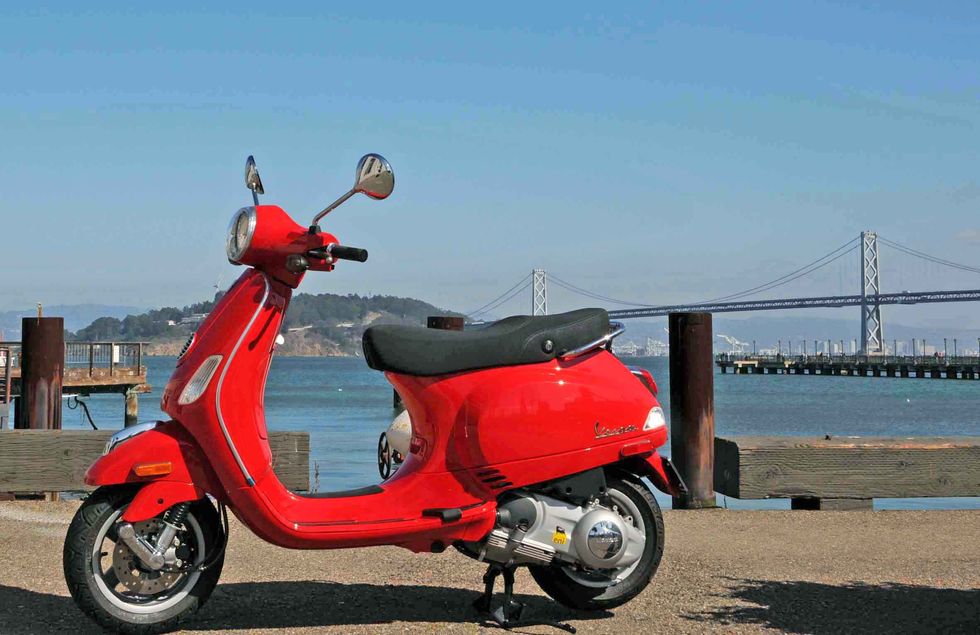In the States two wheels beats four
Fiat missed the target with the 500 but Piaggio and Ducati are experiencing double-digit growth on the U.S. market.
by Valerio Boni
The roads of America have always been uphill for motor vehicles made in Italy. If we don't count Ferrari and Maserati, cars and motorcycles have never had an easy time against the internal competition, the Japanese and even the other European industries, German in particular, as the recent defeat of Fiat proves.
It wasn't able to reach its goal of 50,000 cars sold in the season that launched the 500. However, there are other representatives of the Italian motor vehicle industry that are quietly making inroads and conquering America.
Ducati and Vespa are now a clear success there, and their massive presence in the parking lots of the big cities is the natural consequence of steadily increasing sales.
The two brands occupy completely different segments. Vespa is universally recognized as «THE» scooter. Ducati, on the other hand, divides its hold on the market between two different products: Street Bikes, motorcycles for riding on paved roads, and Dual Sport Bikes, sports models that focus on extreme performance.
On the whole, the offering made in Italy covers everything but the cross-country bike segment of two wheelers, worth about 80,000 units.
Awaiting the final data for 2011, the partial balances are positive. With 8,509 bikes delivered in the first 11 months of the past year, Ducati reports an increase of 45% compared to the same period of 2010, on a market that, on the whole, is lagging by 10%.
The results obtained by the Piaggio Group were even better, and it no longer follows the development of the market, but influences market performance. With 8,700 vehicles registered in the first three quarters, the Vespa and the other scooters produced in the historic Pontedera plant play a fundamental role in the +17% reached, with a total of 24,474 vehicles registered.
This means that more than one scooter in three is Italian, while the rest of the market is divided among the large oriental groups, in particular Japanese and Taiwanese manufacturers. Piaggio and Ducati are now reaping the fruits of a presence that goes back a long way, on one of the most prestigious markets, and has had its ups and downs, with a commitment that has not always been crowned by success at the height of the expectations.
Before its official arrival with its own structure, Ducati belonged to the network of Joe Berliner, who specializes in representing European brands, from Moto Guzzi to Norton. The Berliner Motor Corporation had the power to influence the business choices of the manufacturers, promising the mirage of conquering an important, authoritative market.
Among the many suggestions, however, only one turned out to be successful: the Scrambler, produced between 1962 and 1974 and universally recognized as the precursor of the enduro bikes launched in the Eighties by the Japanese. The adventure of the Apollo project was much less successful, with heavy investments to develop a new four-cylinder engine for installation on a 1200 to compete with the Harley-Davidson.
It was an investment that in 1963 gave Ducati the satisfaction of being the only European manufacturer to try a similar operation, but in the end it never led to a mass-produced vehicle.
Vespa, too, first appeared in the U.S. a few years after the end of World War II, in 1951, to be exact. First is was represented by a Chicago distributor, then, after 1955, with headquarters located first on Long Island, later in San Francisco.
The results were positive until the beginning of the Eighties, when increasingly strict antipollution regulations effectively excluded the Italian scooters from the market. They had remained anchored to the two-cylinder engine fueled with a mixture of gasoline and oil which was simple and cheap to build, but could not comply with the American antipollution limits.
Piaggio returned to dominate the American market in 2000, when the range was renewed in terms of reducing toxic emissions. Vespa and Ducati are now finally reaping the fruits they planted over the years, with strategies apparently as distant as their bases.
While the management that handles distribution of the scooter has its office in a building on Park Avenue in New York, DNA (Ducati North America) has its headquarters in Cupertino, California, on the Apple Campus.
The vehicles are essentially the same ones circulating on the Italian roads, the only adaptations being required by American law for the positioning of the headlights. No one is thinking now of designing a vehicle just to suit the tastes of American users, as they did in the past.
The days in which production lines could be torn apart in pursuit of a mirage are long gone, and this is confirmed by Dominique Cheraki, general manager of DNA. «When we start to design a new model we don't overlook the needs of any market, without letting any one prevail over the others and alter the balance. More than trying to meet the needs of a biker in a specific geographic area, we try to strengthen the power of Italian culture and offer high value for money, and the trade results show that the market perceives that perfectly».

